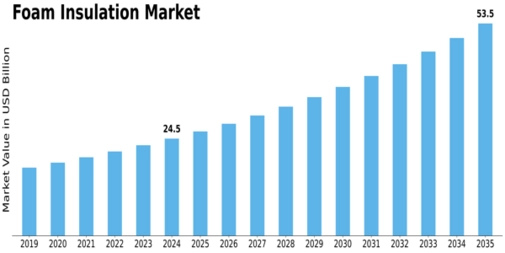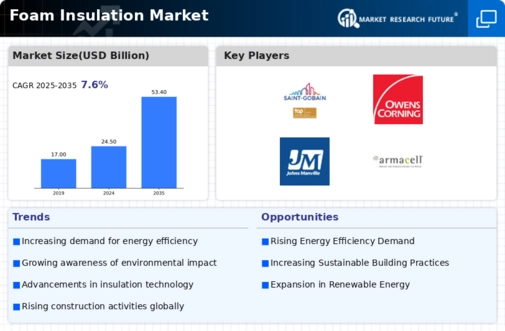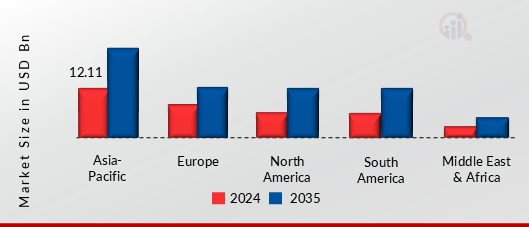Foam Insulation Size
Foam Insulation Market Growth Projections and Opportunities
The foam insulation market is influenced by several market factors that play a crucial role in shaping its dynamics. One significant factor is the increasing demand for energy-efficient solutions across various industries and residential sectors. With growing awareness about environmental sustainability and the need to reduce energy consumption, there has been a rising preference for insulation materials that offer high thermal resistance and minimize heat transfer. Foam insulation, known for its excellent insulating properties, is witnessing a surge in demand due to its ability to enhance energy efficiency in buildings and industrial applications.
Moreover, government regulations and policies aimed at promoting energy conservation and reducing greenhouse gas emissions are driving the adoption of foam insulation materials. Many countries have implemented building codes and standards that mandate the use of energy-efficient insulation in new constructions and renovations. Incentive programs and subsidies provided by governments to encourage the adoption of sustainable building practices further contribute to the growth of the foam insulation market.
Another key market factor is the construction industry's growth and expansion, particularly in emerging economies. Rapid urbanization, industrialization, and infrastructure development projects necessitate the use of advanced insulation materials to improve building performance and occupant comfort. Foam insulation finds extensive application in residential, commercial, and industrial construction projects, fueling its demand in the global market.
The foam insulation is considered the best to reduce greenhouse gas emissions and lower utility bills. It can reduce energy consumption by minimizing the air leakage that occurs on door frames, external walls, window frames, roof underlays, crawlspaces, and crawlspaces attics, floorings, and others.
Technological advancements and innovations in foam insulation products also play a crucial role in driving market growth. Manufacturers are constantly investing in research and development activities to enhance the performance, durability, and sustainability of foam insulation materials. The development of eco-friendly foam formulations with reduced environmental impact is gaining traction among consumers and industry stakeholders.
Furthermore, fluctuating raw material prices, particularly petrochemical-based feedstocks such as polyurethane and polystyrene, significantly impact the foam insulation market. Price volatility in raw materials can influence production costs and product pricing, thereby affecting market competitiveness and profitability for manufacturers. To mitigate these challenges, companies often engage in strategic partnerships, vertical integration, and supply chain optimization to ensure a stable supply of raw materials and minimize cost fluctuations.
The competitive landscape of the foam insulation market is characterized by the presence of several key players competing based on product quality, price, brand reputation, and distribution network. Market players are focusing on product differentiation and portfolio expansion to gain a competitive edge and capture a larger market share. Additionally, mergers, acquisitions, and collaborations are common strategies adopted by companies to strengthen their market position and expand their geographic presence.
Consumer preferences and changing lifestyles also influence the demand for foam insulation products. Increasing emphasis on indoor air quality, noise reduction, and thermal comfort drives the adoption of advanced insulation solutions that offer superior performance and versatility. Additionally, the growing trend of sustainable and eco-friendly construction practices encourages the use of recyclable and bio-based foam insulation materials.









Leave a Comment